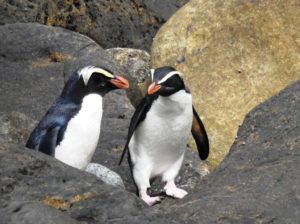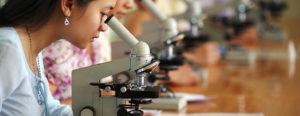Every year we celebrate an International Day of Women and Girls in Science. This day, which falls on the 11th February, is a reminder that women and girls play a critical role in science and that their contribution needs to be celebrated. Here are a few women from the present and the past who have well and truly left their mark in the world of science.
Alice Ball
Long ago, there was no cure for leprosy, a disease that attacks the body and can leave victims terribly disfigured. Because there was no treatment and people believed leprosy was very contagious, sufferers used to isolated in leper colonies with nothing to do but wait for death-or for a cure to be found. In search of that cure, was an incredibly talented Hawaiian chemist who was studying the properties of the oil extracted from the chaulmoogra tree. This oil had been used in many Chinese herbal cures and a couple of times on lepers which the results would always differ. Alice's question was why didn't it always work every time. Alice teamed up with a surgeon from a hospital to try and find the answer to that question. She developed a way to separate the active elements of the chaulmoogra oil and created a new extract that could be injected directly into the patients bloodstream-with incredible results. Unfortunately, Alice died before she was able to publish her findings so the University of Hawaii did it for her-without giving her any credit. Many years later, her contribution was recognised and now Hawaii even celebrate Alice Ball Day on February 29 every four years.
Caroline Herschel
Though she was only 1.2 metres tall, she made up for her small stature with her contribution to our understanding of space and the world beyond. Born in Germany, 1750, she was 22 the year she left to join her brother William, in the English city of Bath to train as a singer, but it was soon astronomy that took the focus of their lives. She worked as a assistant to William, recording his observations and helping him produce more accurate lenses to search the endless sky. Between them they were able to record around 2,500 new nebulae and star clusters. She then became an independent astronomer and was the first woman to discover a comet. In recognition of her work she was employed by King George III in 1787 as William's assistant making her become the first woman ever to be paid for scientific work. In total she discovered 14 new nebulas, eight comets and added 561 new stars to Flamsteeds Atlas. Caroline's contribution has been honoured many times, including a gold medal from the Royal Astronomical Society in 1838. She also has a comet, an asteroid, a crater on the moon and a space telescope named after her.
Jane Goodall
Attitudes towards wildlife and animal conservation has changed dramatically in recent years thanks to the research and dedication of scientists in the are of biology and zoology such as Chimpanzee lover, Jane Goodall. From childhood Jane yearned for a life among African wildlife away from the war-stricken England she was born into. As she was unable to afford going to university, Jane settled to the job of a secretary. When 23, she had saved up enough money to go to Kenya where she met renowned anthropologist and palaeontologist Dr Louis S B Leakey. Leakey impressed and amazed with Jane's enthusiasm and knowledge, embarked alongside her on an investigation of wild chimpanzees in Gombe at a time where the concept of a young woman cohabiting with wild and unknown African animals was preposterous.




















